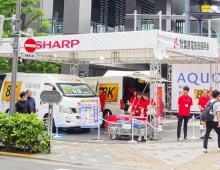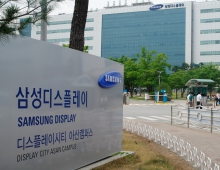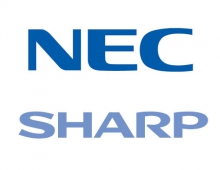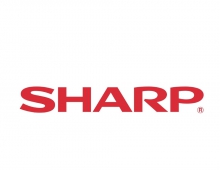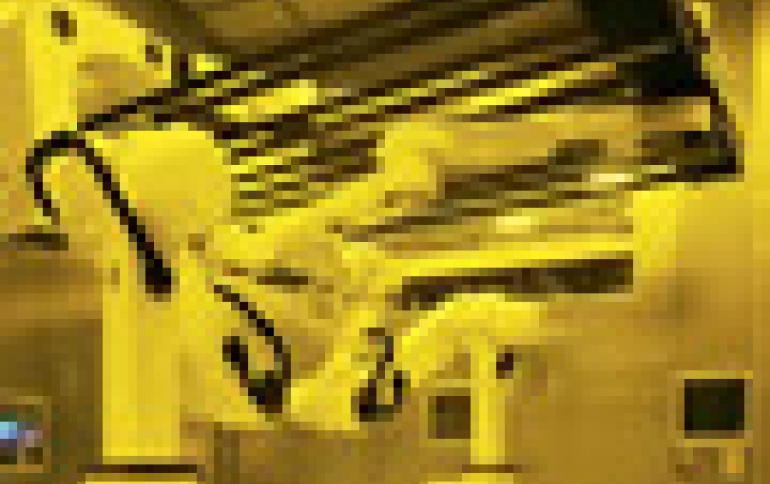
New 10th Generation Panels Bring Sharp Ahead Of Rivals
Sharp's new 10th-Generation LCD Panel plant strengthen the company's position as a panel manufacturer and may allow the company sell displays to rivals, including Sony.
The Japanses company started operations last month at its new LCD panel plant in Sakai City, Osaka Prefecture, Japan.
The LCD panel plant is the first facility in the world to adopt 10th-generation glass substrates. Using Sharp's proprietary UV2A photo-alignment technology, the plant is capable of producing high-contrast, energy-efficient panels of 40, 60, 65 inches TVs or even larger. Each sheet, measuring about 2,880 x 3,130 mm, is cut into smaller sizes for panels for TVs. A 10th generation "mother glass" is big enough to produce 18 40-inch panels.
The new plant brings Sharp ahead of rivals - at least in size. Samsung, the global leader in LCD TVs, makes 8th generation sheets and is considering investing in plants for bigger sheets.
Sharp is hoping to grow even stronger as a panel manufacturer - selling displays to rivals, not just making TVs to sell under its own "AQUOS" brand.
That's a difference that gives Sharp an edge over Japanese rival Sony, which has fallen behind in flat-panel TVs and must buy displays from Samsung and Sharp.
However, Sharp still lags behind Samsung, Sony and Panasonic in the rankings of TV brands by global sales share, according to U.S. company Display Search.

The plant now makes 36,000 substrates a month. By October next year, it will be running at full capacity, producing 72,000 substrates a month, ahead of the year-end shopping season.
Construction of the new plant began in November 2007 on Sharp's manufacturing complex- Sharp Green Front Sakai - which includes this LCD panel plant and as well as another plant for thin-film solar cells. Sharp Green Front Sakai will bring the world two environmentally friendly products: energy-saving LCD panels and energy-creating solar panels. Sharp aims to make this complex an environmentally advanced production base through such environmental measures as adopting LEDs for all indoor and outdoor lighting (approximately 100,000 LED lights) throughout the complex. In addition, Sharp will install solar panels on all factory roofs to provide some of the needed electricity.
The plant was also designed to be greener than previous plants, and together with a nearby plant that makes solar panels, conserves nearly 1.4 million tons of carbon dioxide emissions a year.
Sharp opened the gates of the plant to journalists yesterday. According to reports, the futuristic-looking plant doesn't have a single worker on the floor. Each sheet is being made and tested by computerized machines and robots.
The LCD panel plant is the first facility in the world to adopt 10th-generation glass substrates. Using Sharp's proprietary UV2A photo-alignment technology, the plant is capable of producing high-contrast, energy-efficient panels of 40, 60, 65 inches TVs or even larger. Each sheet, measuring about 2,880 x 3,130 mm, is cut into smaller sizes for panels for TVs. A 10th generation "mother glass" is big enough to produce 18 40-inch panels.
The new plant brings Sharp ahead of rivals - at least in size. Samsung, the global leader in LCD TVs, makes 8th generation sheets and is considering investing in plants for bigger sheets.
Sharp is hoping to grow even stronger as a panel manufacturer - selling displays to rivals, not just making TVs to sell under its own "AQUOS" brand.
That's a difference that gives Sharp an edge over Japanese rival Sony, which has fallen behind in flat-panel TVs and must buy displays from Samsung and Sharp.
However, Sharp still lags behind Samsung, Sony and Panasonic in the rankings of TV brands by global sales share, according to U.S. company Display Search.

The plant now makes 36,000 substrates a month. By October next year, it will be running at full capacity, producing 72,000 substrates a month, ahead of the year-end shopping season.
Construction of the new plant began in November 2007 on Sharp's manufacturing complex- Sharp Green Front Sakai - which includes this LCD panel plant and as well as another plant for thin-film solar cells. Sharp Green Front Sakai will bring the world two environmentally friendly products: energy-saving LCD panels and energy-creating solar panels. Sharp aims to make this complex an environmentally advanced production base through such environmental measures as adopting LEDs for all indoor and outdoor lighting (approximately 100,000 LED lights) throughout the complex. In addition, Sharp will install solar panels on all factory roofs to provide some of the needed electricity.
The plant was also designed to be greener than previous plants, and together with a nearby plant that makes solar panels, conserves nearly 1.4 million tons of carbon dioxide emissions a year.
Sharp opened the gates of the plant to journalists yesterday. According to reports, the futuristic-looking plant doesn't have a single worker on the floor. Each sheet is being made and tested by computerized machines and robots.


